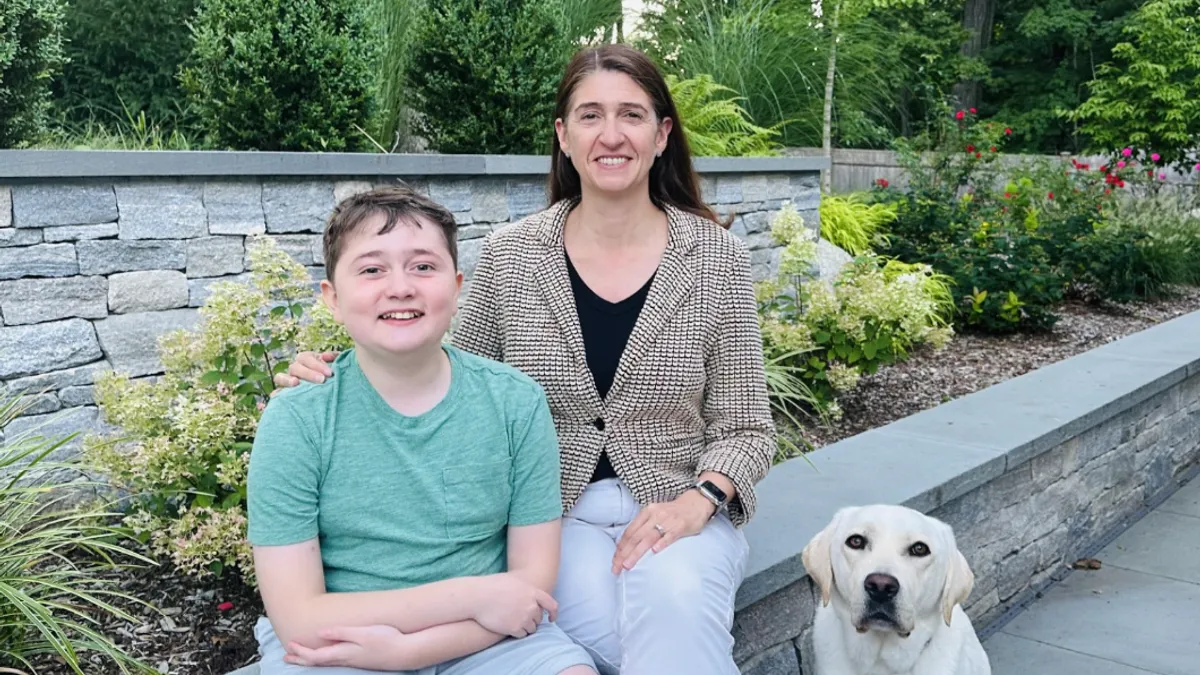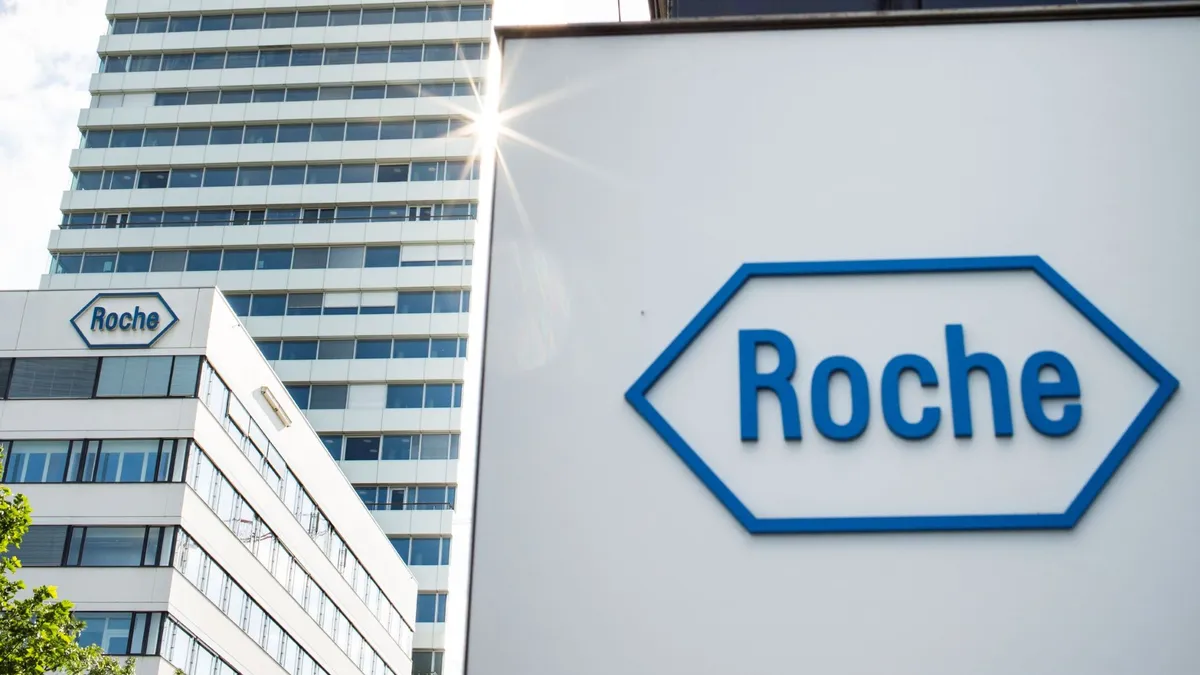As cancer precision medicine improves, the development process gets more complex. From curating the right diagnostic to finding a manufacturing partner with the needed capabilities, a company like Astellas needs to spin several plates even before a drug enters the clinic.
The Japanese pharma recently celebrated the approval of its first-in-class gastric cancer treatment Vyloy, beating high-profile peers like AstraZeneca, Moderna and Legend Biotech to the market with the anti-CLDN18.2 drug.
Following a manufacturing setback in the beginning of the year, Astellas gained the go-ahead for a combination of Vyloy and chemotherapy while the FDA simultaneously approved a companion diagnostic from Roche to determine if patients have the mutation the drug targets.
"For us, it is best to find the right tool for a cancer, and not the best cancer for a tool."

Dr. Tadaaki Taniguchi
Chief medical officer, Astellas
That cross-company effort points to the challenges of moving forward with precision medicine in the already complicated field of oncology.
How did Astellas pull it off?
Here, the company’s chief medical officer, Dr. Tadaaki Taniguchi, explains how Astellas coordinated efforts between its R&D teams and diagnostic makers while navigating a difficult manufacturing landscape to bring the first-of-its-kind drug to market. Taniguchi also discussed why Astellas is poised to leverage unique drug development opportunities in cancer.
This interview has been edited for brevity and style.
PHARMAVOICE: What are some of the biggest challenges you face when developing precision medicines?
DR. TADAAKI TANIGUCHI: [It’s] always [about] what biomarkers or what targets are most important, and how we actually achieve such a target. That’s the biggest challenge, but the second challenge is to develop testing, because if you have a good asset that increases the level of expression of a protein, you need to develop the testing that has the same sensitivity and specificity. And then the third challenge is to make that test a routine practice — sometimes it can be bothersome and cost more, and if the physician doesn’t see the benefit, then they don’t test it. So the very important thing is you need to educate physicians to understand the value so they can start treatment as appropriate.
Can simultaneous development of a precision medicine and a companion diagnostic result in a chicken or egg situation where you have trouble finding the starting point?
We actually approach this in the discovery phase. For example, we have a product targeting the KRAS G12D [mutation] — we know that the KRAS mutation is driving the tumor growth, particularly looking at pancreatic, lung and colorectal cancer. We approach it with targeted protein degradation, but that’s of course just phase one. Phase two is to get testing for the patient in a clinical setting, and you need to work with sites on both phases in parallel. And then there’s the cost. You need to be in concert about the patients’ and payers’ view, as well as the cycle time for how long it takes to get the result from a lab, especially for patients whose cancer is progressing rapidly. It is important you do all this at the same time.
You recently gained approval for Vyloy in advanced gastric and gastroesophageal junction cancer for a specific mutation, and it was approved along with a diagnostic from Roche. Can you talk about how those conversations begin?
First we have to decide to either start with the experimental level to develop our own testing or we can partner with another company before we start a clinical trial. At the same time, we need to think about who is the best partner that can actually provide the scientific support. Because this process is going to be in parallel development with a new product, we need to think about a partner that will have enough capacity for commercialization not just in the U.S. but also globally in Europe, Japan and sometimes China. You need to synchronize, and I think that’s hugely important.
The FDA originally rejected Vyloy for manufacturing reasons that were separate from what was happening with the science, which is common these days. How can drugmakers work with manufacturers to keep this from happening?
In pharma, we can’t have every single capability, and so we need to work with organizations like a CDMO. And it’s hugely important for any pharma or biotech to have a good partnership with them. In our experience, bringing a complicated product like a bispecific antibody or antibody-drug conjugate, we need to work together closely to improve quality and place the right level of confidence in their capability to manufacture the product. We also need to understand cost structures to have a good alignment between the market and the requirements from a regulatory agency.
What’s next for Vyloy as you aim at new targets like pancreatic cancer?
We have an ongoing phase 2 trial for Vyloy which is hopefully going to be registrational. Of course, we started working together with our partner to develop companion diagnostics for pancreatic cancer and preparing for all the activity that we need to create data moving forward. This is extremely important in a different type of cancer with different thresholds to optimize the testing and make sure we align with our partner to move the product to the market.
What are some of the biggest challenges and opportunities in oncology in the next few years that will make the most difference for patients?
Oncology areas see an opportunity in that there’s a huge unmet medical need. Even talking just about lung cancer, you see great progress in the last two decades. But patients relapse from the current treatments, so we need to understand what’s happening with, for example, a PD-1 inhibitor, because otherwise the only efficacious treatment available is chemotherapy. So there’s a huge opportunity in second- and later-line treatments to bring a new modality and new ways to treat a patient, like T cell engagers or protein integrators, for instance.
Astellas doesn’t back away from a challenge. For example, KRAS was for a long time considered ‘undruggable.’ How do you persist when others in the industry see a dead end?
What is unique about Astellas from other large pharmas is they [don’t always] have the same level of variability of modalities. We have a cell therapy. We have a bispecific. We have an ADC platform. And many more. Even within one cancer type, there are a lot of pathways you can target — if you are just an antibody company, that limits the way you can treat these. But if you have five different tools, you can choose the best approach to target the pathway. For us, it is best to find the right tool for a cancer, and not the best cancer for a tool.




















